Astilbe spp.
It’s easy to forget that flowers aren’t just for sun-kissed spots – there are plenty that thrive in shade.
Exhibit A: astilbe. Of all the plants that could grace a shade garden, species of Astilbe arguably come in at the top of the list.
The foliage itself is visually interesting, but it’s the colorful flowers that really makes astilbe sing.
And as an added bonus, they don’t mind being placed in a wet corner of the yard. What more could you ask for from a shade-loving perennial?
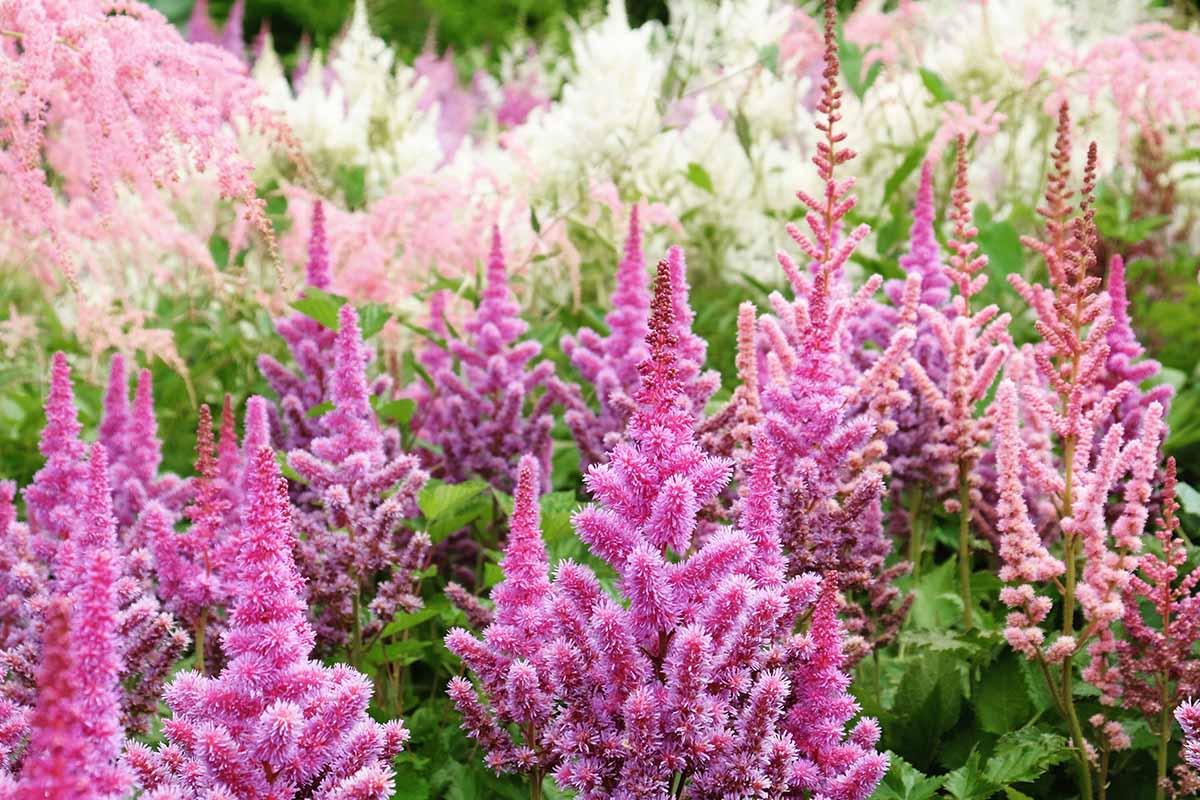
We link to vendors to help you find relevant products. If you buy from one of our links, we may earn a commission.
An astilbe is no wimp, but some TLC will definitely help it look its best. But what does that look like? I’m glad you asked.
We’ve prepared an informative overview of growing, establishing, and maintaining astilbe. We’ll also take a look at some nice cultivars that you can add to your own garden.
Keep reading to delve into the awesomeness of astilbe!
Here’s what we’ll be covering:
What You’ll Learn
If you aren’t already familiar with these lovely perennials, then it’s time for some introductions!
What Are Astilbe Plants?
Belonging to the Saxifragaceae family, the Astilbe genus contains approximately 25 species of flowering herbaceous perennials, which are collectively hardy to USDA Zones 3 to 9 and native to east Asia, southeast Asia, and the southeastern United States.
The compound, feathery, and fern-like foliage of astilbe can vary in color, but it’s generally an emerald green in the spring with a bronze tone that becomes more pronounced as temperatures heat up.
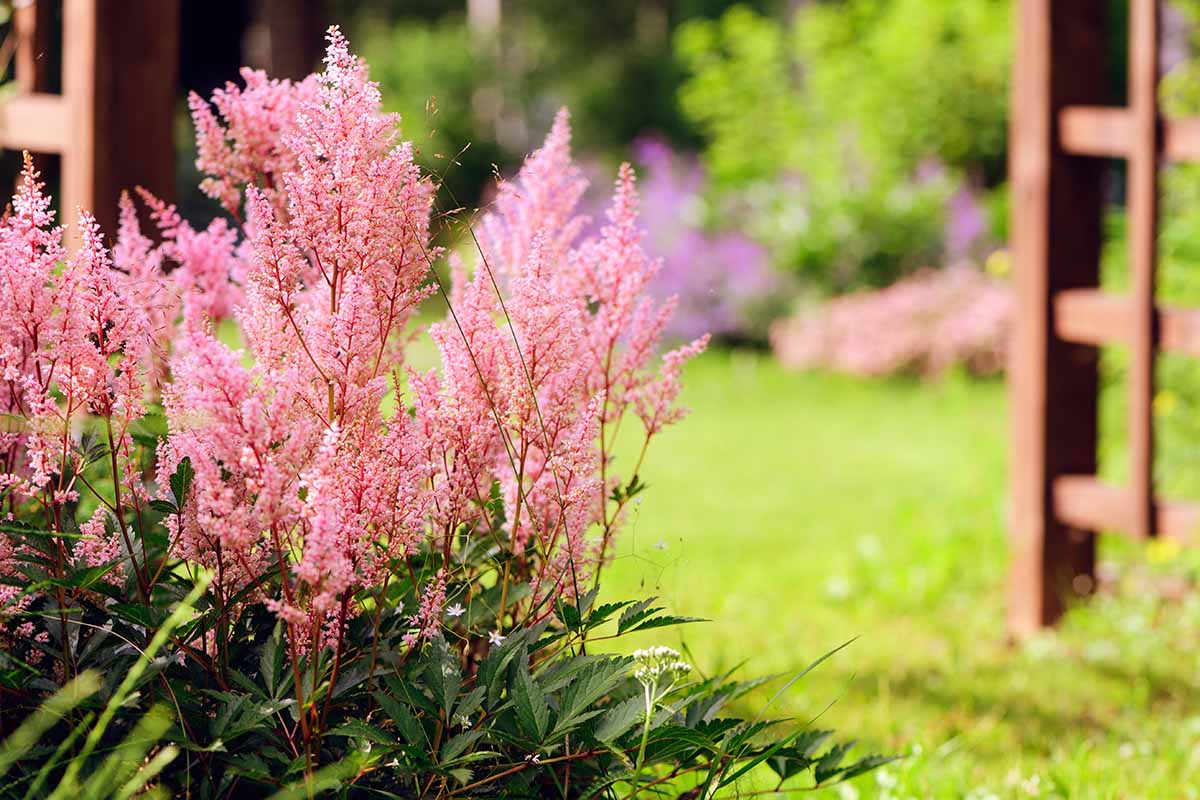
As astilbe is a basal plant, the foliage tends to come up from a single point of origin at the plant’s base.
The mature size is also variable – depending on the species and variety, these plants can reach heights of six inches to five feet, and spreads of six inches to three feet!
A relatively slow-growing plant, astilbe spreads via underground rhizomes to fill in a space nicely, when given enough time.
Emerging atop tall stems in late spring to late fall are the flowers: panicled, feathery plumes of tiny blooms that come in white, pink, purple, or red hues.
Along with being just as graceful and easily windblown as the leaves, these flowers are super attractive to bees, butterflies, and other pollinating insects.
Cultivation and History
Each species of Astilbe has its own epic origin story of how it came to be cultivated by green thumbs.
But when discussing the history of astilbe as a whole, you can’t leave out George Arends.
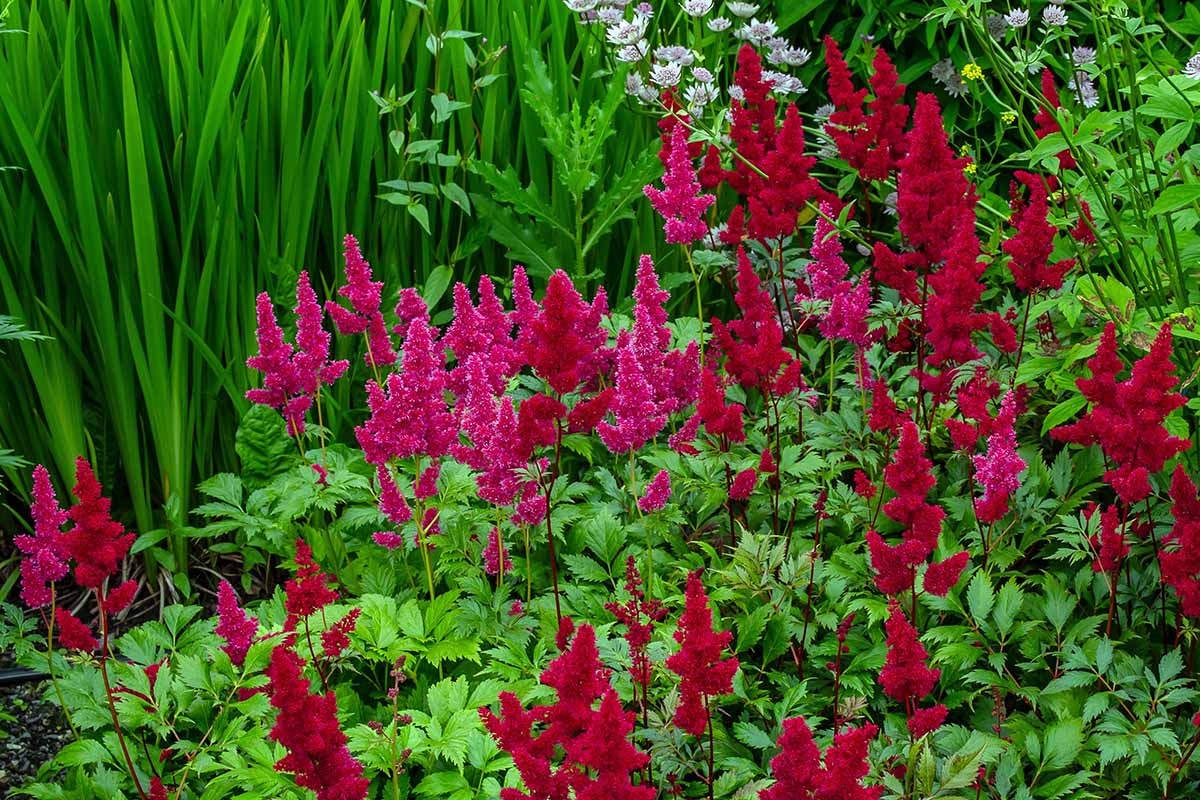
A plant nurseryman from Ronsdorf, Germany, Arends was a master hybridizer.
In the 1920s, Arends utilized A. chinensis, A. japonica, A. thunbergii, and A. astilboides to create the Arendsii group of hybrids, designated A. x arendsii.
He was a real whiz, too – at one point, he developed 74 different varieties in a single year!
These hybrids, with their uniquely striking flowers, are a big reason why astilbes are so beloved today.
Astilbe Propagation
Have astilbe plants piqued your interest yet? You can start some in your very own garden by sowing seeds, dividing mature plants, or transplanting potted specimens from a nursery.
From Seed
I’ll be honest, propagating astilbe from seed can be a bit challenging. The germination rates can be low, and seed-grown plants can take years to flower. But it is possible.
However, varieties usually don’t grow true from seed, meaning seeds will probably produce a different-looking plant from the parent.
So, if propagating perfectly alike plants is the goal, then I’d stick with division. But if you enjoy the overall challenge and the possibility of a unique yield, then read on!
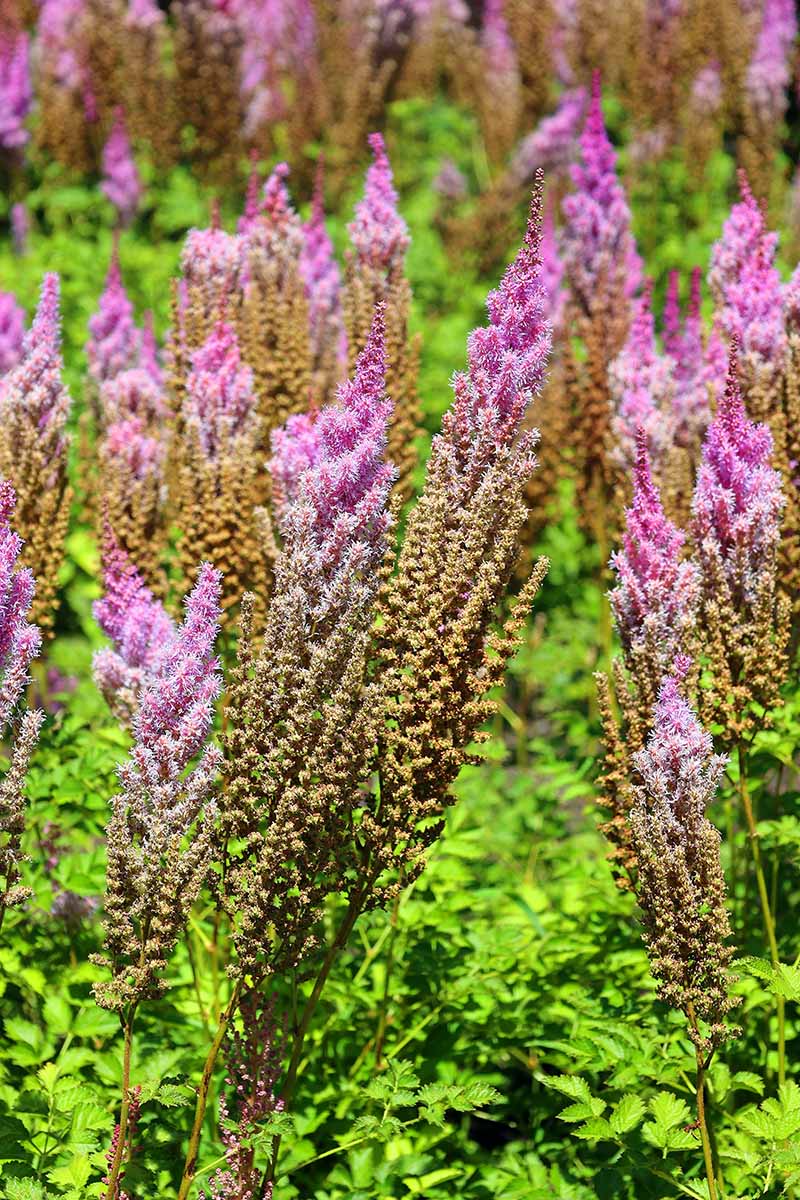
In the proper conditions, your plants may actually self-seed and yield nearby volunteer seedlings.
You can move these into new spots in late spring or early fall, or simply let them grow where they are.
For actual seed collection, keep an eye on your specimens once they bloom. Eventually, the inflorescences will form seed pods.
When they’re ready to harvest, they will appear brown and dry. Cut away these seed stalks and lay them out on sheets of newspaper to dry.
Once they are dry, remove the seed pods and place them in a paper bag. Shake the bag until the seeds have collected at the bottom of the bag. Put these seeds in a paper envelope, and keep them in a safe, dry spot until the following spring.
Come spring, take your seeds and soak them in lukewarm water for 24 hours. Pitch the floaters, as those aren’t viable.
Fill a seed tray with an even mix of coconut coir and perlite, or something that both retains moisture and lets the excess drains away.
Scatter the seeds across the media’s surface, gently press them in with a finger, and gently moisten the media with water.
Place the tray in an indirectly-lit spot indoors, somewhere where it’s at least 60°F. Keep the media moist, and the viable seeds should germinate in 20 to 25 days.
As the seedlings grow, pick out any weak or unhealthy ones.
When you have healthy seedlings with at least two pairs of true leaves, pot them on into their own three- to four-inch containers, kept in similar conditions as the seed tray.
In fall, before the frost date, they should be ready for transplanting into the garden or an outdoor container. And at three years of age, your seed-grown plants should start flowering.
But first, you’ll need to harden off your seedlings. That entails bringing them outside for a half hour to an hour, bringing them back inside, and then adding 30 to 60 minutes of outdoor exposure each following day until they can handle a full day outside prior to transplanting.
Via Division
Because it spreads via rhizomes and grows slowly, plants should be ready to dig up and divide every three to five years.
Believe it or not, a large enough clump can be divided into a dozen daughter plants!
Learn more about how to divide astilbe in our guide.
Transplanting
For the gardener who wants to see results sooner rather than later, it’s suggested that you purchase plants from a reputable nursery.
Otherwise, you can transplant your divisions or seedlings!
Transplanting can happen in spring after the final frost, or in fall before the first frost.
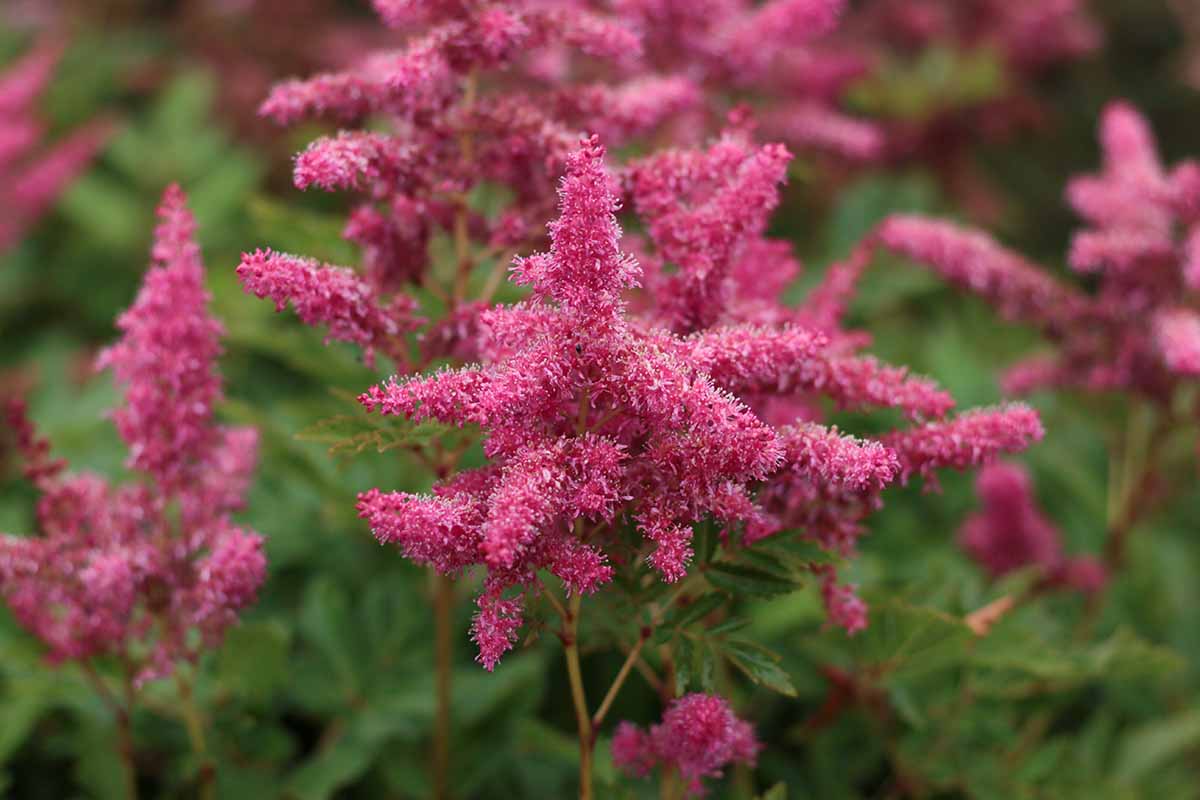
Prepare partially shaded planting areas of rich, well-draining soil with a pH of 6.0, ideally. Or, if you want to keep them from eventually spreading, you can also grow astilbe in containers.
Once it’s time for transplanting, dig holes about as deep and a bit wider than the transplants’ root systems. Space these holes about a foot apart.
Gently ease the transplants from their containers and lower them into the holes. Backfill the holes with dug-out soil, water in the soil, and you’re done!
How to Grow Astilbe
Let’s discuss what these plants need to thrive, shall we?
Climate and Exposure Needs
A fan of dappled shade, astilbes will do its best flowering with four to six hours of sun a day. If planted in deep shade, they’ll still grow lovely foliage, but not as many flowers.
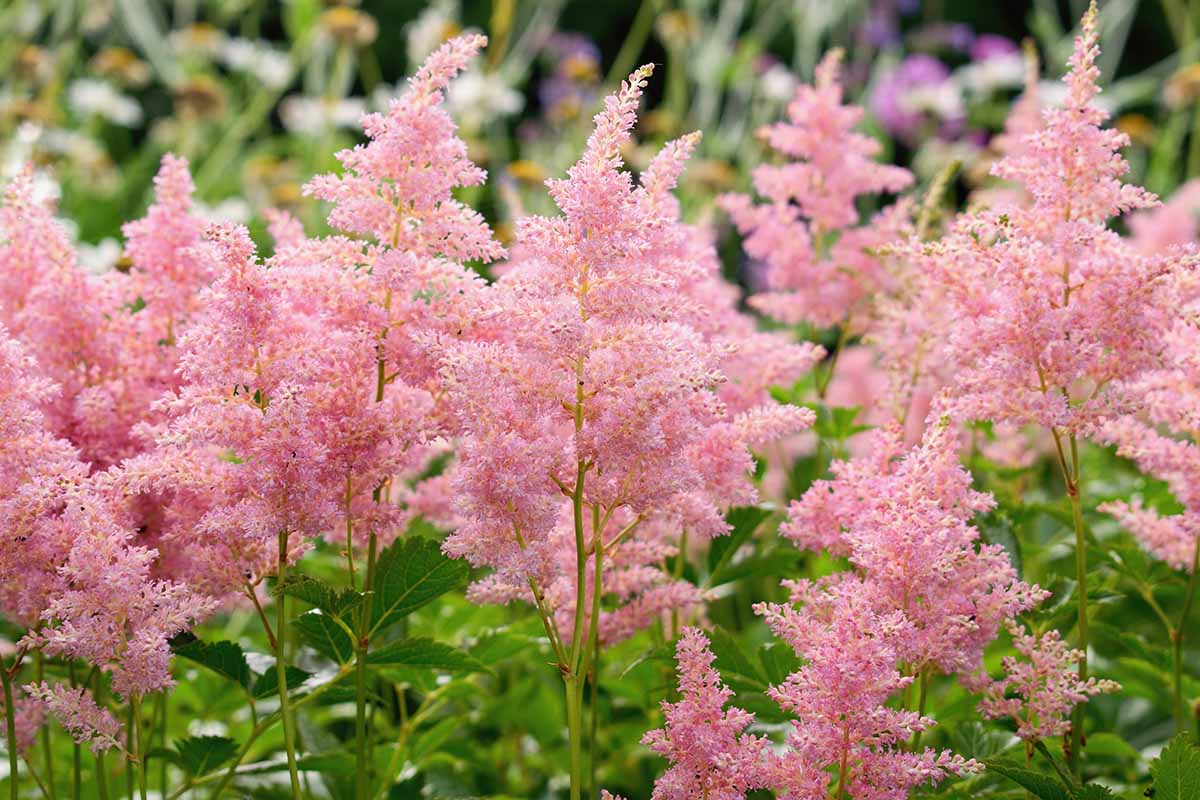
They can handle full sun, but only in northern climates like those in Zones 3 and 4. Otherwise, full sun could cook them crispy.
Astilbes are rather hardy in the winter. They tend to grow in US Hardiness Zones 4 to 8, though some cultivars can even grow in Zone 3.
Soil Needs
Astilbes are at their best in a slightly acidic soil that is consistently moist, making them perfect for that low corner of your yard that receives consistent water run-off.
Regular additions of compost or well-rotted manure provide a fertile environment for astilbe, as well as improving your garden’s soil quality.
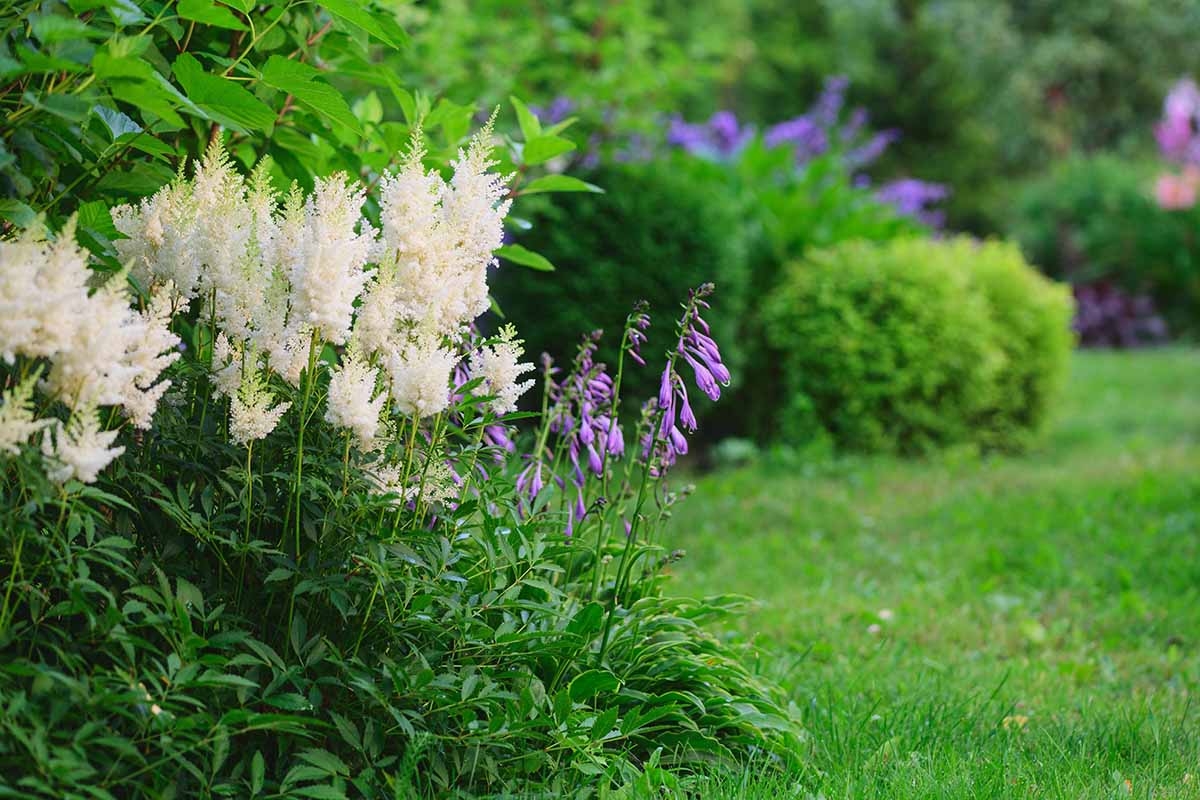
By amending your soil, you can make a more hospitable home for if your intended location is less than perfect.
Put in the extra effort to create an ideal site with good drainage, plenty of organic material, and consistent moisture, and you’ll find your astilbe at their happiest.
Water and Fertilizer Needs
In addition to adding compost to amend the soil regularly – twice a year, in both spring and fall – astilbe benefits from additional springtime fertilization, too.
Astilbe can benefit from a fertilizer with a high phosphorus content to encourage blooming and root development.
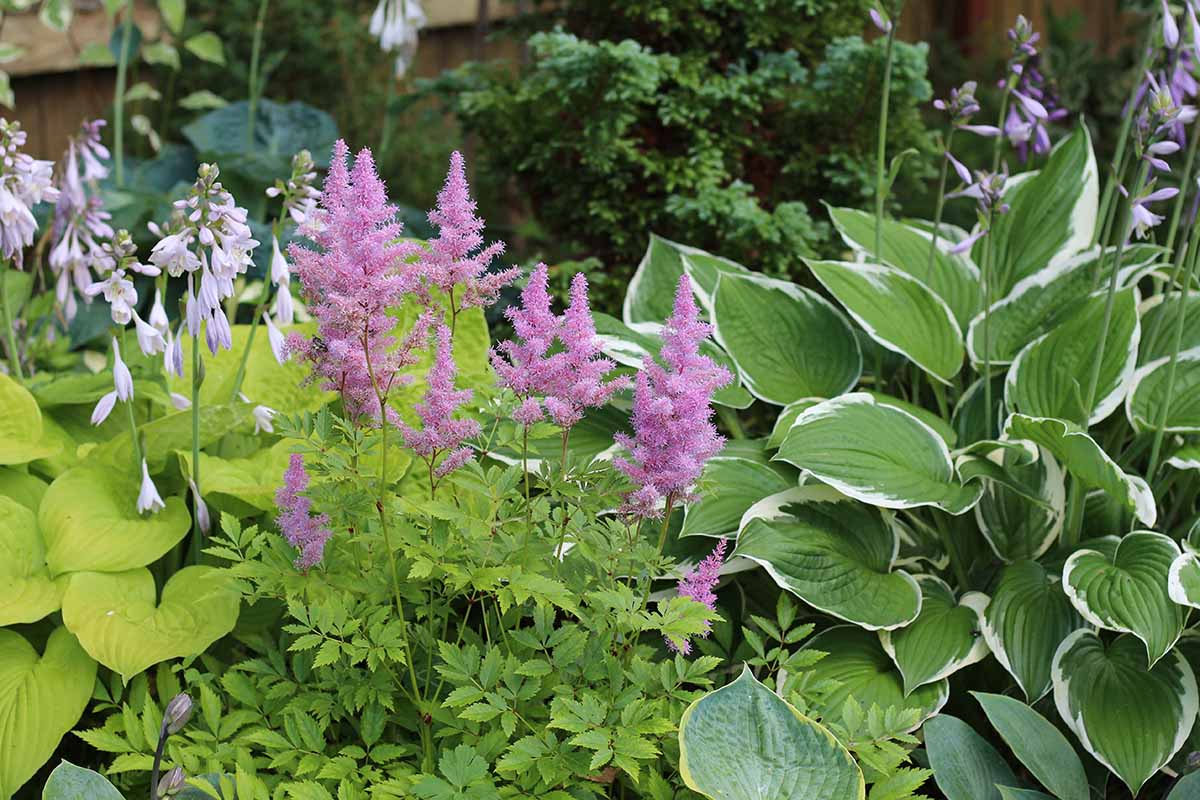
They’ll grow their best when given plenty of water, but they don’t like “wet feet.” That makes good drainage essential, and also makes heavy clay soils a no-go for these plants.
Irrigation-wise, if you check the soil an inch down and don’t feel moisture, then it’s definitely time to water.
Be careful not to water too much during the winter, as this will stress and harm the roots.
Growing Tips
- Partial shade is best, but full sun and full shade are both tolerable.
- A rich, moist, and well-draining soil with a pH of 6.0 is best.
- Water whenever the top inch of soil dries out. Or, keep the soil constantly moist.
Pruning and Maintenance
Honestly, there’s not much to do here.
Leaving the flowers and foliage standing through the winter helps to ensure a smooth transition from winter to spring, and the flower heads can add special interest and a meal for hungry birds.
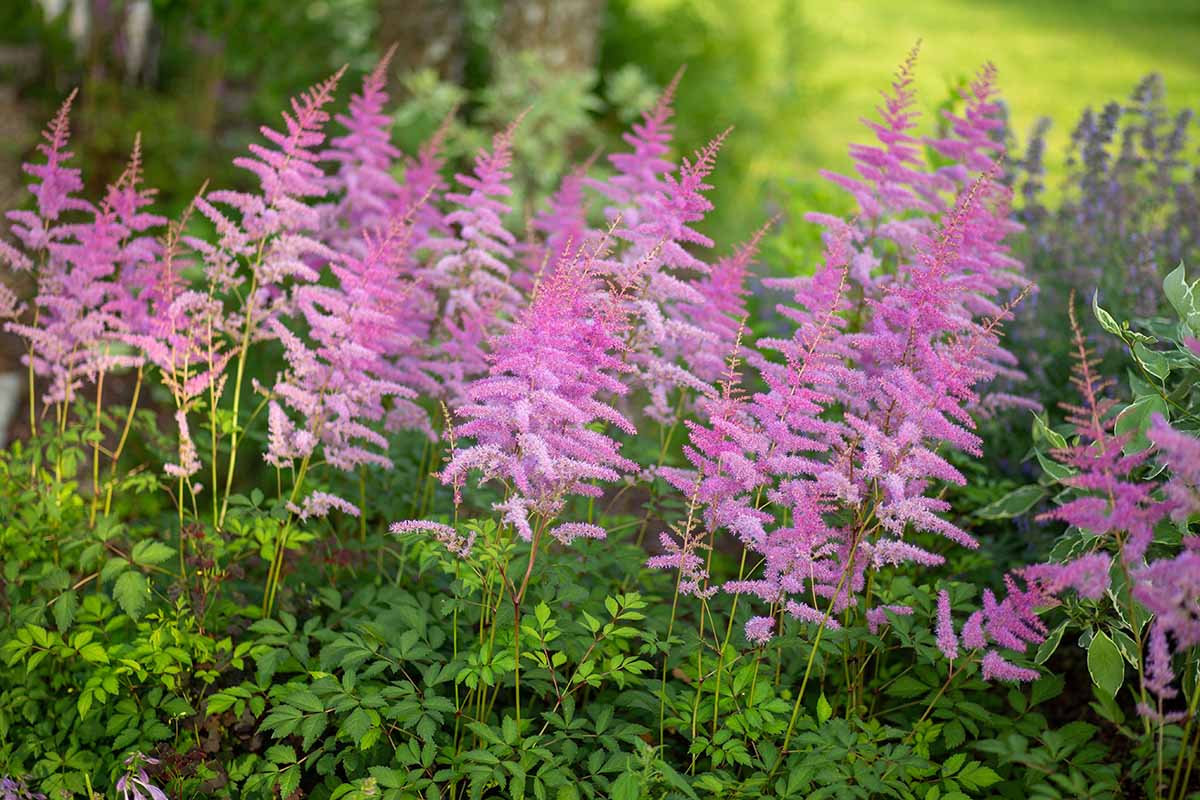
Every three to five years, divide your specimens to keep them appropriately sized for their planting site.
Specimens in containers should be repotted whenever they have less than an inch or two of space between the roots and the container’s sides.
Astilbe Cultivars to Select
There are hundreds of varieties to choose from, so we thought we’d narrow the list down a bit for you.
Each cultivar described below is a top pick so you can find the right plant for your yard, and we’ve included recommendations from our trusted affiliates to purchase your very own!
Want even more options? Be sure to check out our supplemental guide where we share 15 of the best astilbe varieties.
Bridal Veil
A. x arendsii ‘Bridal Veil’ is about as delicate a flower as they come.
Lacey foliage in a deep and saturated green hue serves as the base for creamy, all-white flowers that live to surf on the breeze.
‘Bridal Veil’ reaches a height of up to 28 inches and blooms throughout the summer.
You can find plants available at Nature Hills Nursery in #1 containers.
Delft Lace
Blue-green foliage pairs with the almost apricot flowers of A. x arendsii ‘Delft Lace.’
The foliage is notably rougher-looking than that of most astilbes, which adds an interesting texture to the garden.
If grown in full sun the flowers will suffer, but the foliage takes on a reddish color.
The blooms emerge in late spring to early summer, and this plant reaches two feet in height.
‘Delft Lace’ is available in #1 containers at Nature Hills Nursery.
Fanal
A. x arendsii ‘Fanal’ features deep red blooms, complemented by the lovely display of emerald green foliage that astilbe is famous for.
Blooming in late spring to midsummer, it reaches a mature height of 18 to 24 inches.
‘Fanal’ is available at Burpee.
Little Vision in Pink
If you’ve got an ambition to add some pink to your garden, ‘Little Vision in Pink’ is the plant for you.
The color falls somewhere shy of bubblegum, but because the plant blooms in early to midsummer, it adds a complement to the maturing foliage of hostas and other shade plants.
This variety reaches a height of about 16 inches.
You can find ‘Little Vision in Pink’ available at Nature Hills Nursery.
Vision in Red
Talk about red!
A. chinensis ‘Vision in Red’ adds a hue just shy of fire truck red to boldly stand out from the cooler colors in your shade garden.
The flower plumes will grow more intense in color until they reach their peak in midsummer, and the bronzed foliage is yours to enjoy for the rest of the season.
This plant reaches a height of about 30 inches.
You can find ‘Vision in Red’ available in #1 containers from Nature Hills Nursery.
Vision in White
If you’re looking for more of a porcelain white than what ‘Bridal Veil’ offers, check out A. chinensis ‘Visions in White.’
The foliage is a lovely bronze-green, and the plant reaches a height of about 30 inches.
As an added bonus, ‘Visions in White’ can bloom all the way into the fall, if the conditions are right.
‘Vision in White’ is available in #1 containers from Nature Hills Nursery.
Managing Pests and Disease
Though they’re at their best in shady areas with moist soil, these plants are prone to a few problems. But just a few – they’re otherwise surprisingly resistant to pests and diseases.
Many common garden nuisances such as deer, rabbits, or even slugs and snails fail to pose a threat.
That being said, here’s how to deal with the threats your astilbes could face.
Insects
Make like a programmer, and keep your eyes peeled for bugs. These bugs, in particular:
Asiatic Garden Beetle
Also known as Maladera castanea, the Asiatic garden beetle came over to the States from Japan and China, and found itself a smorgasbord of plants to munch on. Astilbes in particular.
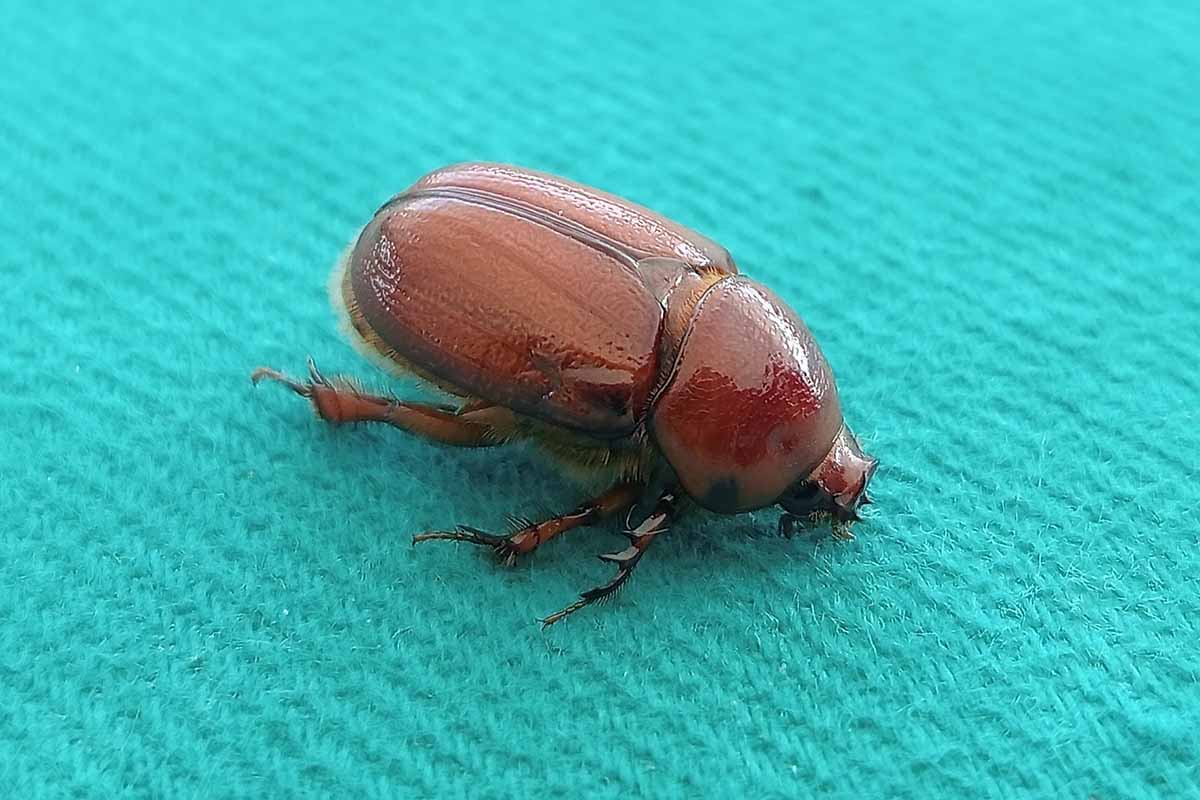
The tan to white grubs measure 5/16 to 3/8 of an inch in length, while the adult beetles are a third of an inch long, with a luminous reddish-brown sheen.
The grubs feed on the roots, while the adults feed on the foliage – both of which stress and weaken the plant.
Remove nearby plant detritus to deter populations the next season.
Small numbers of adult beetles can be hand-picked at night and tossed into soapy water, or even killed with light traps, which consist of an outdoor lightbulb situated six inches above a pan of soapy water on the ground.
Insecticides may be needed to combat the grubs and to fight severe infestations.
Black Vine Weevil
Another bothersome beetle, Otiorhynchus sulcatus is a flightless, snout-nosed, hard-bodied, black beetle that’s half an inch long in adult form.
The stout grubs are the same length, with brown heads and white to pale yellow bodies.
Adults emerge in spring to feed on foliage, with peak feeding in summer and early fall. Larvae hatch from laid eggs and feed on roots and basal crowns.
The leaf munching is more aesthetically annoying, while the larvae feeding does more significant damage.
Adults can be removed and destroyed in spring, to stop them from feeding and laying eggs. Do this by going out at night, shaking damaged branches out over tarps, and crushing the bugs that fall on the tarp.
Additionally, spinosad can be sprayed on leaves to deter feeding.
You can use Heterorhabditis or Steinernema species of beneficial nematodes to drench the soil around infected plants, which should kill any larvae.
Systemic insecticides like imidacloprid can combat adults and larvae alike.
You can find NemaSeek, which contains Heterorhabditis nematodes, available from Arbico Organics.
Tarnished Plant Bug
Lygus lineolaris feeds on many different plants besides astilbe – at least 385!
The adults are about a fifth of an inch in length, and are colored a mix of yellow to reddish brown to black, with relatively long antennae.
Overwintering in nearby plant detritus, rock piles, and water banks, the adults emerge in spring to feed on developing buds and flowers. Feeding with piercing-sucking mouthparts, they extract sap, and can also transmit disease.
Eliminate overwintering sites by pulling adjacent weeds and cleaning up nearby plant detritus.
Simply picking the bugs off of plants and dropping them in soapy water is the preferred control method, but you can also look into introducing parasitic wasps.
Disease
Diseases can easily spread, so lessen the odds of infection by frequently sterilizing your garden tools.
Keep an eye out for the following:
Cercospora Leaf Spot
Caused by various species of Cercospora fungi, leaf spot causes cosmetic spots on leaf surfaces, and also hinders plant growth.

Many gardeners will just let it go or simply remove infected leaves, but preventative applications of copper fungicide have been shown to put a marginal dent in the spread of this disease.
Fusarium Wilt
Infecting the vascular, water-conducting xylem tissues of plants, this wilt is caused by Fusarium oxysporum, a soil-borne fungus that survives in soil for long periods of time.
Once infected, a plant will wilt, droop, turn yellow, and become twisted, often on just one side. Drought symptoms are common, despite excess moisture being a causal factor. Infected plants eventually die.
Proper watering is the key to prevention. If infected, a specimen should be promptly removed, along with the surrounding soil.
Powdery Mildew
A common affliction of many different plants, powdery mildew is caused by fungal species of Erysiphe, which coat plant leaves with a layer of white, dusty powder.
The causal spores can travel via wind and germinate without needing free water, which makes spread all too easy.
As powdery mildew can harm the leaves and stunt plant growth, it may be helpful to prune infected foliage. You can learn more about how to manage powdery mildew in our guide.
Best Uses for Astilbe
Astilbes are actually quite aesthetically versatile.
Whether you place them in a shade garden or bog garden, as a border or along a waterway, in a container or en masse, an astilbe never fails to look awesome.
You can even harvest the blooms at their peak for use as cut flowers!

Thriving in shady, regularly moist areas offers an astilbe plenty of planting companions. Hosta and iris are natural pals, along with heuchera, trillium, impatiens, and begonias.
Also, consider using mosses and ferns – if you have a suitable spot for astilbe, it’s almost guaranteed that mosses and ferns will readily establish themselves there, too.
Woody shrubs like azaleas and rhododendrons go hand in hand with astilbe as well.
They prefer the same type of light, favor the same slightly acidic and moist soils, and they even have complementary bloom colors!
Quick Reference Growing Guide
| Plant Type: | Herbaceous flowering perennial | Flower/Foliage Color: | Pink, purple, red, white / green, bronze |
| Native to: | East Asia, southeast Asia, southeastern United States | Tolerance: | Deer, full sun (in northern climates), heavy shade, rabbits, slugs/snails |
| Hardiness (USDA Zone): | 3-9 | Maintenance: | Moderate |
| Bloom Time: | Late spring to late summer | Soil Type: | Organically-rich, moist |
| Exposure: | Partial shade | Soil pH: | 6.0-7.0 |
| Time to Maturity: | 3 years (blooming), 4-6 years (full size) | Soil Drainage: | Well-draining |
| Spacing: | 6 inches-3 feet | Attracts: | Bees, butterflies/moths, other pollinators |
| Planting Depth: | Surface sow (seeds), depth of root system (transplants) | Companion Planting: | Shade garden plants (heuchera, hostas, ferns, etc.) |
| Height: | 6 inches-5 feet | Uses: | Bog gardens, borders, container plantings, cut flowers, marginal plantings, mass plantings, shade gardens |
| Spread: | 6 inches-3 feet | Family: | Saxifragaceae |
| Water Needs: | Moderate | Genus: | Astilbe |
| Common Pests and Diseases: | Asiatic garden beetle, black vine weevil, tarnished plant bug; Cercospora leaf spot, Fusarium wilt, powdery mildew | Species: | Astilboides, chinensis, japonica, thunbergii, x arendsii |
Astilbe: A Sight to See
There’s no denying how incredible a clump or two of astilbe looks in the garden.
With graceful blooms and leaves, this plant is sure to grace your garden with beauty, wherever you choose to put it.

Thanks for reading our guide! We hope it’ll help you on your astilbe-growing journey.
As always, we’re eager to talk shop and answer any further questions in the comments section. Drop us a line below!
Want to learn about more flowering plants for the shade garden? Check out these sun-shy beauties next:

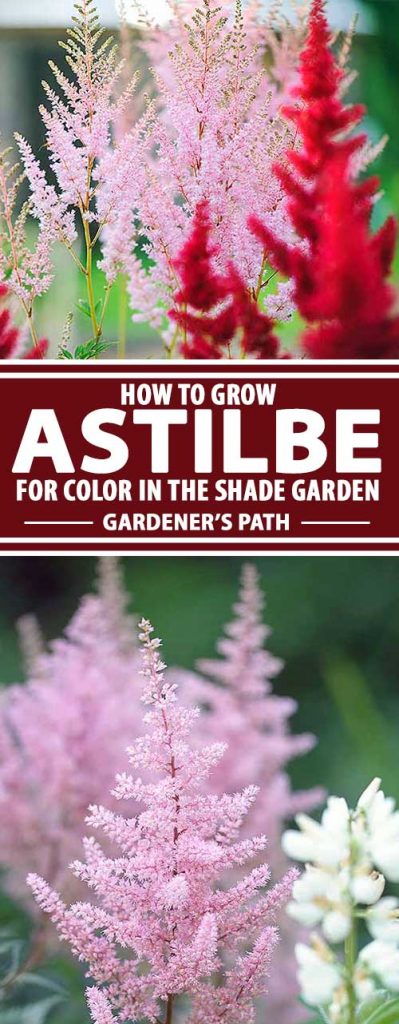
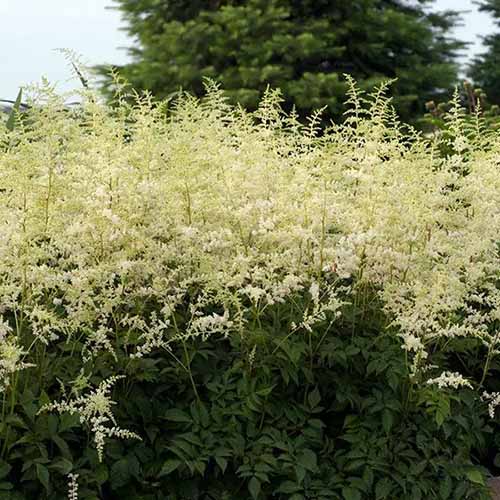
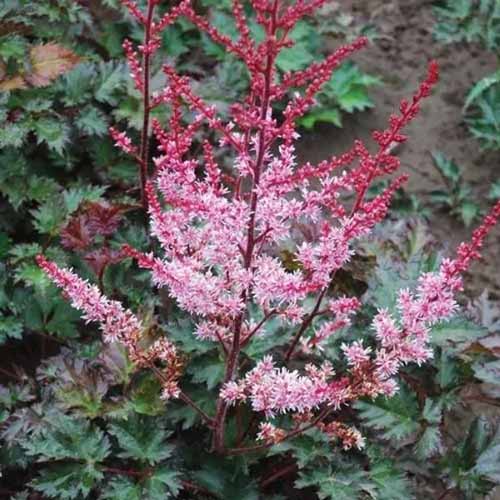

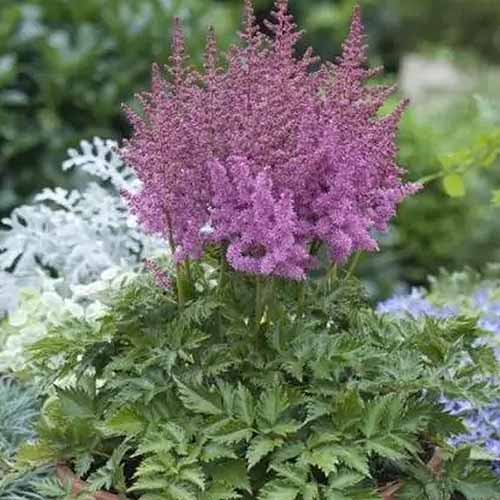
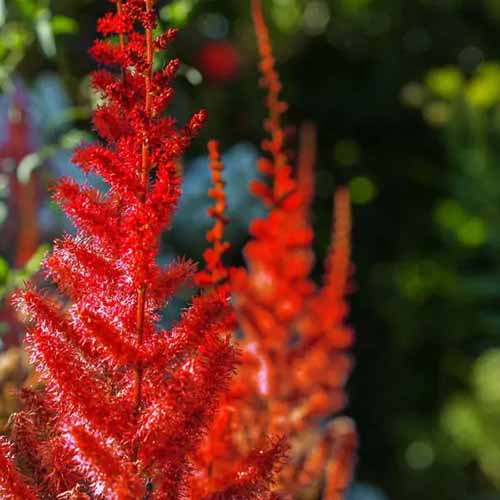
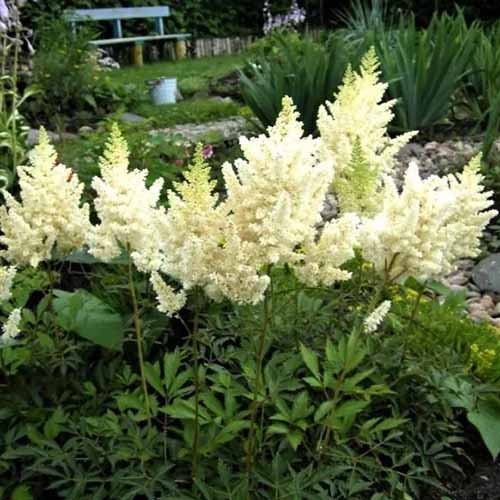
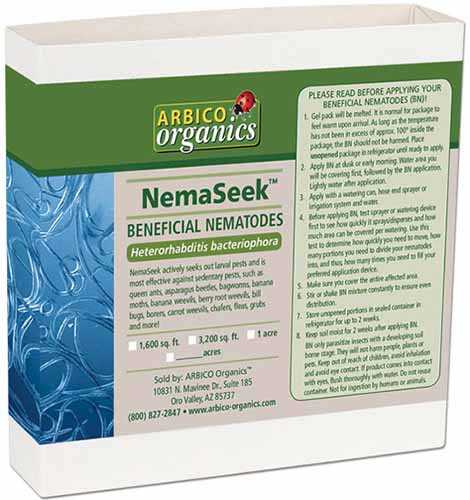
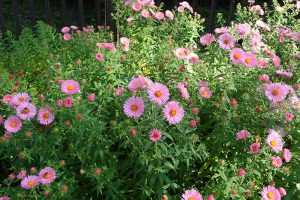

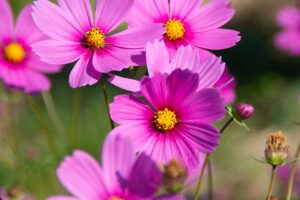
Searching for a Snow White Astilbe for zone 5/6 in Michigan.
Hey John, I’m a big fan of the Bridal Veil astilbe for a good white color. It’s among my favorite astilbe varieties all around. However, if you’re looking for something different, check out Monrovia’s Vision in White. It should be available at most box store garden centers!
Hi Matt,
I must say as a sort of newbie to actually reading up on what I am planting, I am finding your articles fantastic.
I planted a False spirea here in NH and I have just removed the spent flowers. I’m just concerned if I’m removing them correctly. Attached is a picture of my plant.
Marty
Some of the branches of my Astilbe appear dead, crisp and no new growth is happening on them in Spring/early Summer. What went wrong and what can I do about it? I am in zone 3b on the prairies in Canada. TIA.
Hey Brenda. Is the entire plant dead, or is it a few parts of it instead that are crisp and brittle? Sometimes over the winter we’ll find some parts of the plant didn’t survive. That could be from windburn, frost damage, or a number of other causes. If a part of the plant is dry and brittle you can safely snip it away from the rest of the plant, no harm done to it. If it’s the entire plant that’s crisped up and brittle, wait another week or so and you’ll know for sure if it’s dead or not. So… Read more »
I can not seem to find live plant astilbe here in San Diego. I bought Bare root astilbe from Costco last year and none of them lived. Most of those sold on line are bare root. Do you know where I can buy a grown plant ready to transfer to the ground?
So sorry to hear your bare roots didn’t survive! You can find some live plants from Nature Hills Nursery, such as this ‘Fanal’ cultivar, which is a two- to four-year-old plant, and they have others too. I hope you find what you’re looking for!